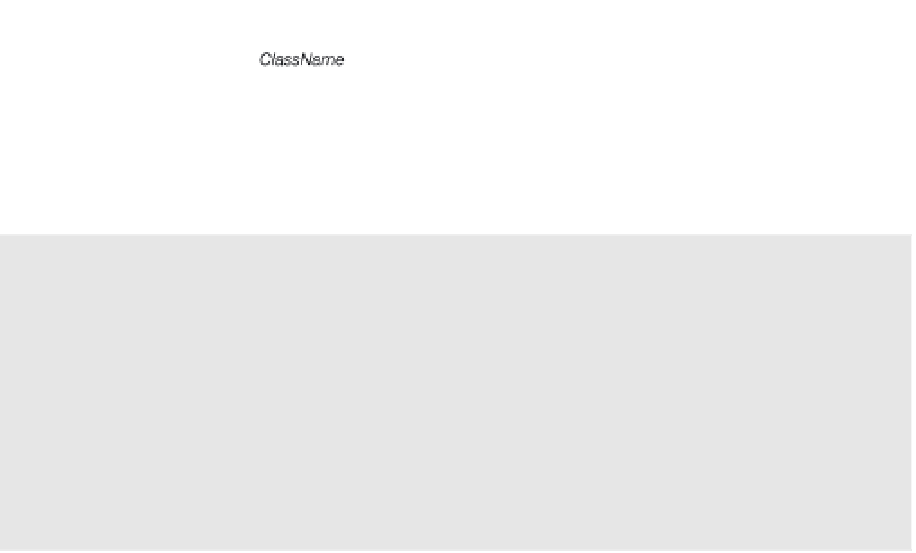Information Technology Reference
In-Depth Information
Constraint Types and Order
There are five types of constraints. These are listed in Table 19-2.
Table 19-2.
Types of Constraints
Constraint Type Description
ClassName
Only classes of this type, or classes derived from it, can be used as the type
argument.
class
Any reference type, including classes, arrays, delegates, and interfaces, can be
used as the type argument.
struct
Any value type can be used as the type argument.
InterfaceName
Only this interface, or types that implement this interface, can be used as the
type argument.
new()
Any type with a parameterless public constructor can be used as the type
argument. This is called the
constructor constraint
.
The
where
clauses can be listed in any order. The constraints in a
where
clause, however,
must be placed in a particular order, as shown in Figure 19-9.
There can be at most one primary constraint, and if there is one, it must be listed first.
There can be any number of
InterfaceName
constraints.
If the constructor constraint is present, it must be listed last.
Figure 19-9.
If a type parameter has multiple constraints, they must be in this order.
The following declarations show examples of
where
clauses:
class SortedList<S>
where S: IComparable<S> { ... }
class LinkedList<M,N>
where M : IComparable<M>
where N : ICloneable { ... }
class MyDictionary<KeyType, ValueType>
where KeyType : IEnumerable,
new() { ... }






















































































